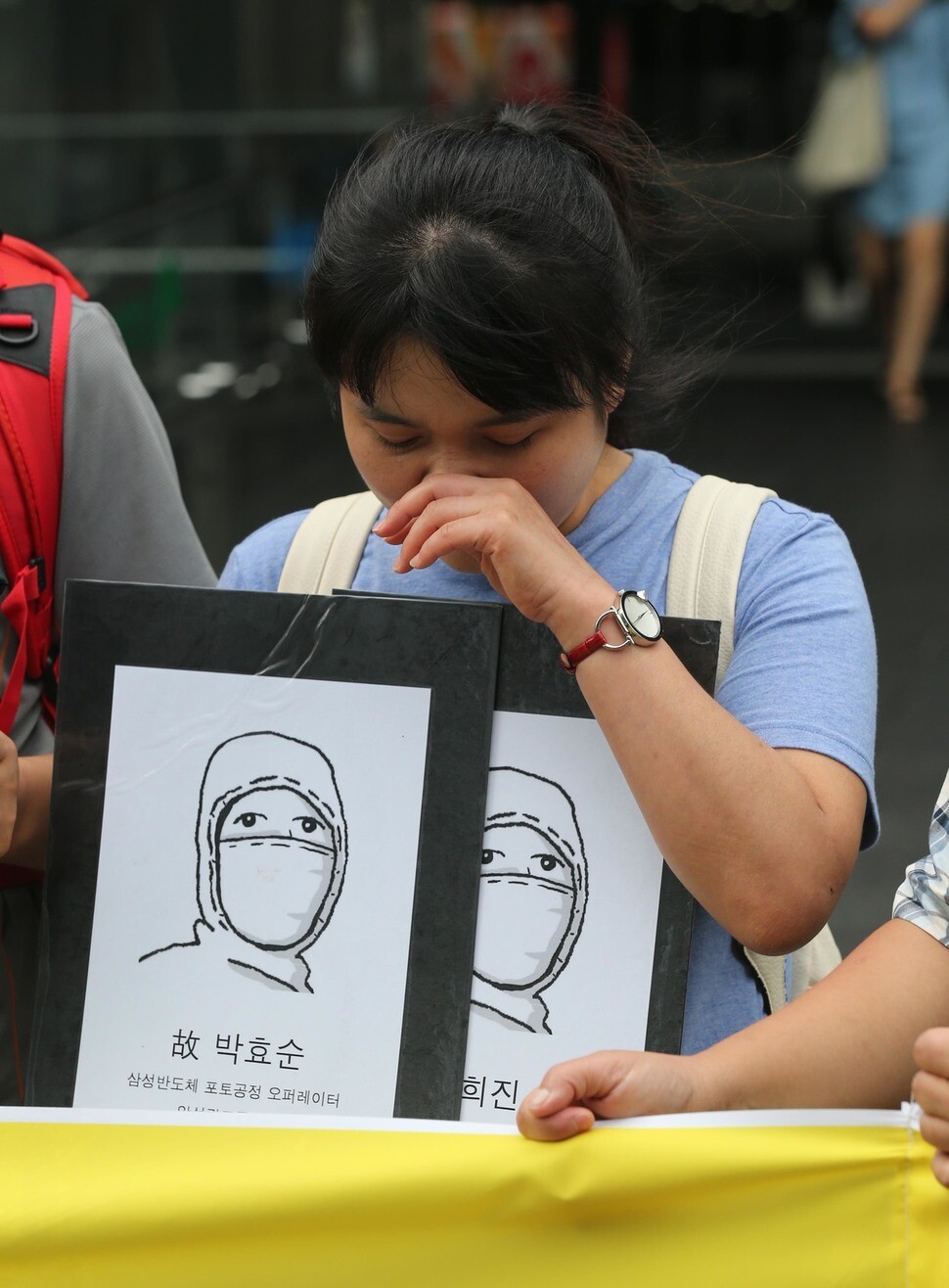hankyoreh
Links to other country sites 다른 나라 사이트 링크
Supreme Court issues landmark decision in Samsung LCD workers’ industrial accident case

The Supreme Court judged on Aug. 28 that multiple sclerosis (MS) cases among Samsung Electronics LCD factory workers should be recognized as industrial accidents. This is the first time the court has recognized a causal relationship between duties and illnesses in a Samsung Electronics semiconductor/LCD factory industrial accident case.
In a case filed against the Korea Workers' Compensation and Welfare Service (K-Comwel) by an individual surnamed Lee, who contracted MS while working at a Samsung Electronics LCD factory in Cheonan, the court’s third divisional under Hon. Kim Jae-hyung decided on Aug. 28 to overturn first and second trial rulings against the plaintiff and return the case to Seoul High Court. Lee, 33, had been demanding that K-Comwel’s decision not to approve [compensation for] medical case be overturned.
“Lee, who showed no symptoms prior to employment, may have experienced a complex mixture of contributions to the emergence and worsening of multiple sclerosis due to various overlapping factors, including exposure to organic solvents, shift work, lack of sunlight, and occupational stress,” the court concluded, acknowledging a substantial cause-and-effect relationship between Lee’s condition and duties.
The court also said the “inability to demonstrate the specific types of harmful substances or amount of exposure due to Samsung Electronics and the local Ministry of Employment and Labor branch’s refusal to disclose related information citing ‘business secrecy’ must be regarded as indirect evidence in Lee’s favor.”
The court’s conclusion that the MS case was an industrial accident may be seen as the result of a broad recognition of causality between work conditions and illnesses – which could serve as an important guideline for workplaces and trials in the future.
In previous rulings as well, the Supreme Court maintained that the burden of proof on workers suffering from occupational diseases as a result of exposure to hazardous chemicals should be reduced. The court determined in numerous cases that a suitable causal relationship between duties and medical conditions did not need to be proven medically or scientifically, but may be recognized through rational inference from a range of factors, including health status at the time of employment, the presence of hazards in the workplace, and period of employment.
Lee is one of four Samsung Electronics MS patients whose cases were received by Banollim, a group working on behalf of the health and human rights of industrial accident victims at Samsung Electronics semiconductor factories and their surviving family members. Two such victims recently had the industrial accident status of their conditions recognized in separate rulings by Seoul High Court. The fourth’s case is currently under industrial accident review by K-Comwel.
“We look forward to the Korea Workers' Compensation and Welfare Service and the epidemiological researchers at the Occupational Safety and Health Research Institute showing the same kind of forward-thinking attitude seen in the Supreme Court ruling,” Banollim said in a statement the same day.
“The legal system for industrial accident compensation insurance must be amended to allow for easier recognition of industrial accident status, including a shift in the burden of proof,” the group added.
By Yeo Hyeon-ho, senior staff writer and Park Tae-woo, staff reporter
Please direct questions or comments to [english@hani.co.kr]

Editorial・opinion
![[Column] Season 2 of special prosecutor probe may be coming to Korea soon [Column] Season 2 of special prosecutor probe may be coming to Korea soon](https://flexible.img.hani.co.kr/flexible/normal/500/300/imgdb/original/2024/0426/3317141030699447.jpg) [Column] Season 2 of special prosecutor probe may be coming to Korea soon
[Column] Season 2 of special prosecutor probe may be coming to Korea soon![[Column] Park Geun-hye déjà vu in Yoon Suk-yeol [Column] Park Geun-hye déjà vu in Yoon Suk-yeol](https://flexible.img.hani.co.kr/flexible/normal/500/300/imgdb/original/2024/0424/651713945113788.jpg) [Column] Park Geun-hye déjà vu in Yoon Suk-yeol
[Column] Park Geun-hye déjà vu in Yoon Suk-yeol- [Editorial] New weight of N. Korea’s nuclear threats makes dialogue all the more urgent
- [Guest essay] The real reason Korea’s new right wants to dub Rhee a founding father
- [Column] ‘Choson’: Is it time we start referring to N. Korea in its own terms?
- [Editorial] Japan’s rewriting of history with Korea has gone too far
- [Column] The president’s questionable capacity for dialogue
- [Column] Are chaebol firms just pizza pies for families to divvy up as they please?
- [Column] Has Korea, too, crossed the Rubicon on China?
- [Correspondent’s column] In Japan’s alliance with US, echoes of its past alliances with UK
Most viewed articles
- 1‘We must say no’: Seoul defense chief on Korean, USFK involvement in hypothetical Taiwan crisis
- 2[Column] Season 2 of special prosecutor probe may be coming to Korea soon
- 3N. Korean delegation’s trip to Iran shows how Pyongyang is leveraging ties with Moscow
- 4Korea sees more deaths than births for 52nd consecutive month in February
- 5Amnesty notes ‘erosion’ of freedom of expression in Korea in annual human rights report
- 6[Reportage] On US campuses, student risk arrest as they call for divestment from Israel
- 7[Editorial] New weight of N. Korea’s nuclear threats makes dialogue all the more urgent
- 8‘Weddingflation’ breaks the bank for Korean couples-to-be
- 9[Column] Has Korea, too, crossed the Rubicon on China?
- 10[Column] Park Geun-hye déjà vu in Yoon Suk-yeol